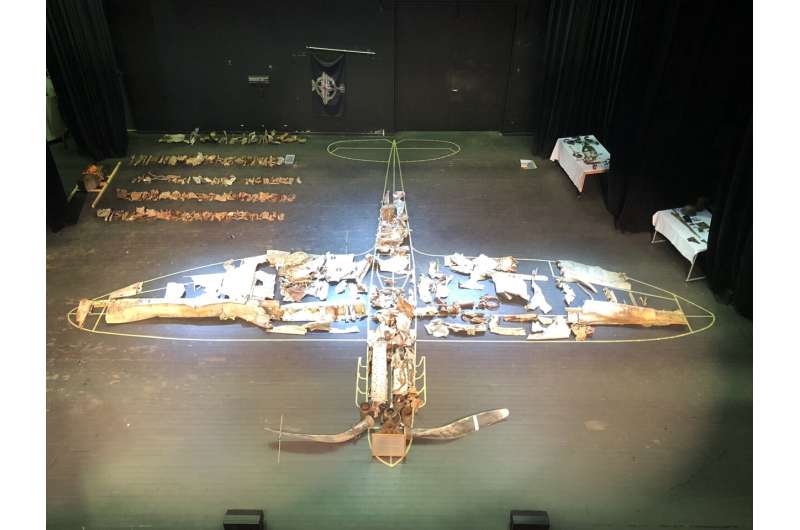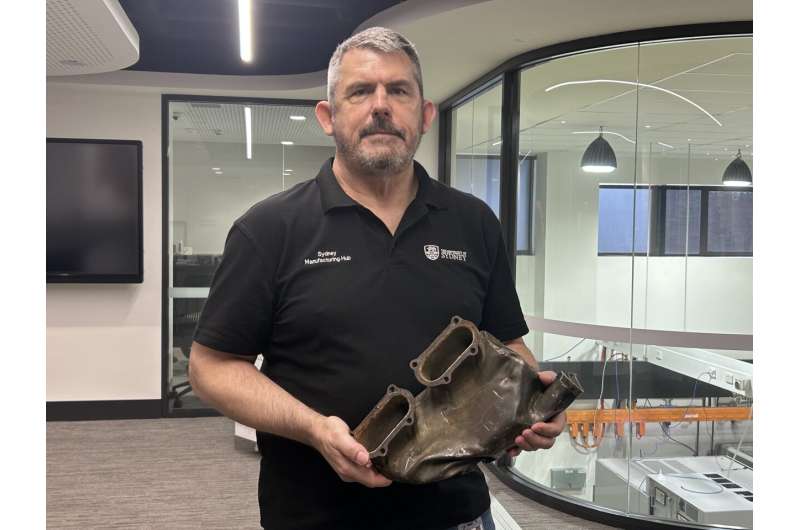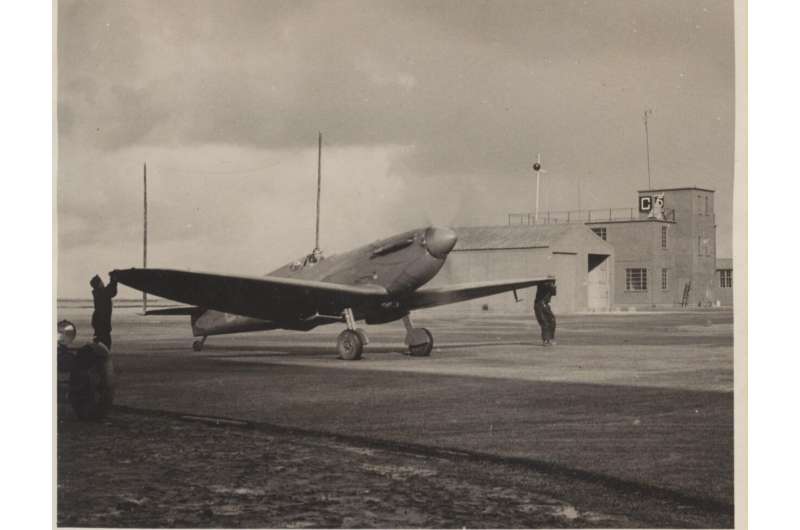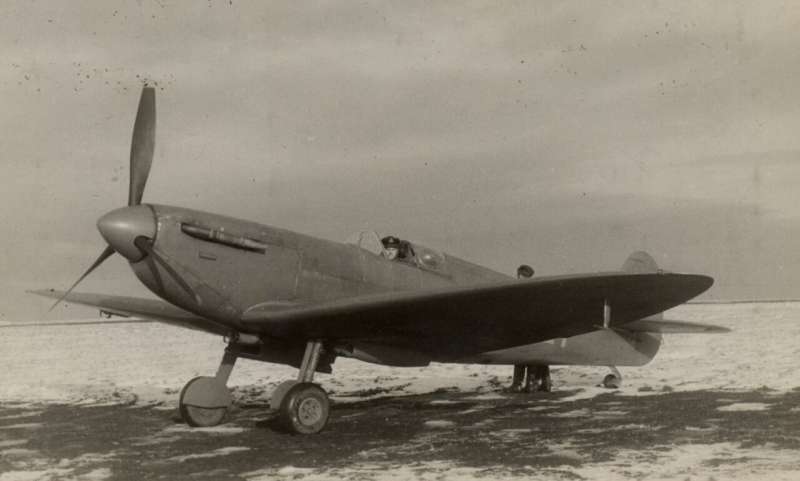This article has been reviewed according to Science X's editorial process and policies. Editors have highlighted the following attributes while ensuring the content's credibility:
fact-checked
trusted source
proofread
Team helps rebuild WW2 Spitfire lost for 76 years in Norwegian wilderness

Engine parts from a rare Second World War Photo Reconnaissance Spitfire that was shot down by German armed forces in 1942 and lost until being recovered from a Norwegian peat bog 76 years later are being rebuilt at the University of Sydney.
The Spitfire's Royal Air Force pilot, Flight Lieutenant Alastair "Sandy" Gunn, escaped the fiery Norwegian crash but was captured and later executed by the German army for his role in the prisoner of war camp break out immortalized by actor Steve McQueen in the 1963 film The Great Escape.
After more than 80 years, the long-lost Spitfire is being entirely rebuilt by an international team headquartered in the United Kingdom in the hopes it will take to the sky again in 2025.
At the University of Sydney, Chief Engineer at the Sydney Manufacturing Hub, Bruce McLean, and his team are rebuilding the aircraft's Rolls Royce Merlin V12 exhaust manifolds using industrial 3D printing, also known as additive manufacturing.
"The Spitfire is iconic. It is one of the machines that won the war. The aircraft we are helping restore is very special indeed as a rare PR-IV model," said Mr. McLean, who has worked for several decades in aeronautical engineering.
"The Sydney Manufacturing Hub is supporting the AA810 Restoration Project using advanced digital scanning technology, computer-aided design and additive manufacturing to reverse engineer and restore the six original exhaust stacks from the aircraft in a modern superalloy material known as Inconel.
"These were originally handmade articles that were damaged almost beyond recognition in the crash and are unobtainable today. Using modern manufacturing tools enables faithful and fully functional replicas to be manufactured and eventually flown on the restored Spitfire AA810 airframe," he said.

One of the original manifolds salvaged from the wreckage arrived in Sydney this month. It, and a set of exhausts from a Spitfire that flew in the Battle of Britain, have been scanned at ultra-high resolution by the University's Zeiss partner Scan-Xpress. These scans will help Mr. McLean's team at the Sydney Manufacturing Hub to develop a blueprint for the restored engine exhausts.
AA810 Spitfire Project remembers forgotten Australian airmen
Close to 1700 airmen who flew in the Royal Air Force's unarmed Photographic Reconnaissance Units have been identified, but only 652 have been confirmed as having survived the war.
Australia contributed 96 airmen to the unit, the second highest number of nations involved in this highly clandestine work. Tragically, at least 37 of these men died during the war.

Alongside the project's ambitious restoration of the rare PR.IV Spitfire, the team is commemorating the airmen whose work provided about 80% of the intelligence information used in the tactical planning of the Allied campaign.
Tony Hoskins, who orchestrated the Spitfire's salvage and is now leading the project from Britain said the project is about people. "Researching the people behind such a secretive mission is a great challenge and few people realize there were so many Australians who played a pivotal role," he said.
"Take, for example, Australian actor Bud Tingwell. He was known and loved as a popular film and TV star, but Bud also flew 75 reconnaissance operations in Spitfire and Mosquito aircraft over Italy from 1944. Finding out what other stories are out there and being able to record them for future generations is what makes this project so rewarding."
Pro-Vice-Chancellor (Research Infrastructure) Professor Simon Ringer, commended the team on their efforts. "We are delighted to contribute to this global project to achieve an historic restoration," he said.
"This is a fascinating case of reverse engineering. We're using state-of-the-art design, materials science and manufacturing technologies to build this engine system.

"Apart from the learning opportunities for our engineers, it is a very special way to honor the service and sacrifice of the people involved at such a difficult time in history. Nearly 150 pilots of WW2's Royal Air Force Photographic Reconnaissance Unit were from Australia and New Zealand."
The AA810 Spitfire project is appealing for families of Royal Australian Air Force airmen seconded to fly Royal Air Force Reconnaissance missions during the Second World War to come forward to help identify the 11 Australian nationals that the project holds incomplete data on.
25 April is the national day of commemoration of Australia and New Zealand for victims of war and for recognition of the role of their armed forces.


















